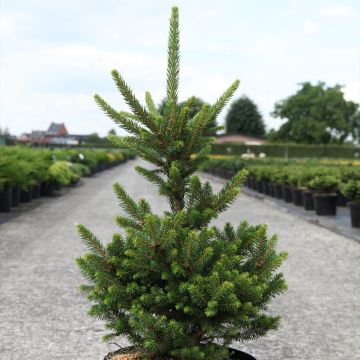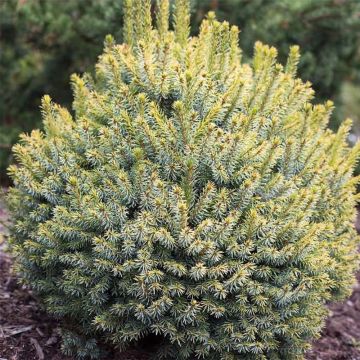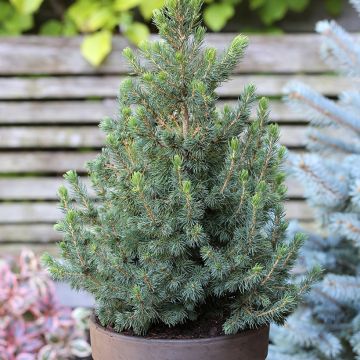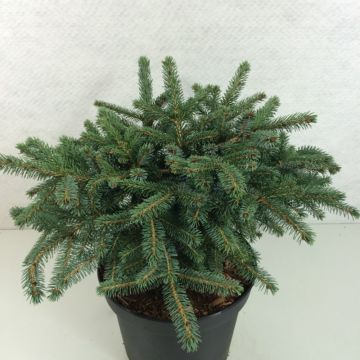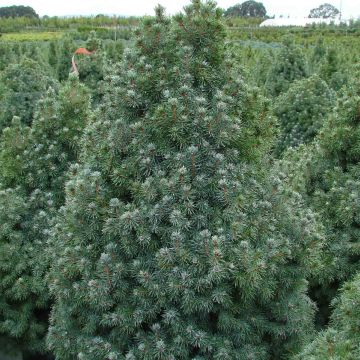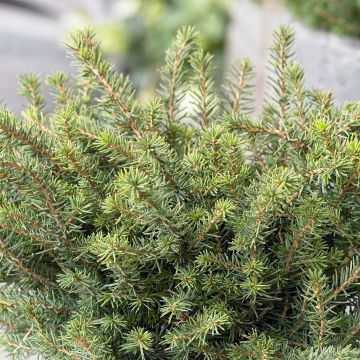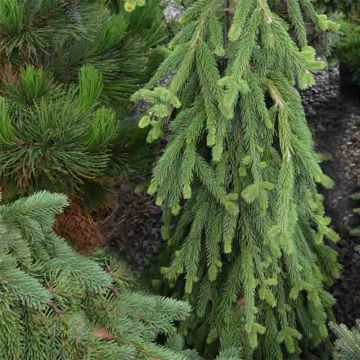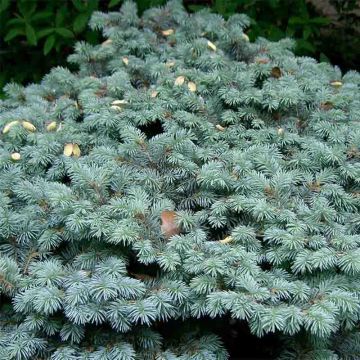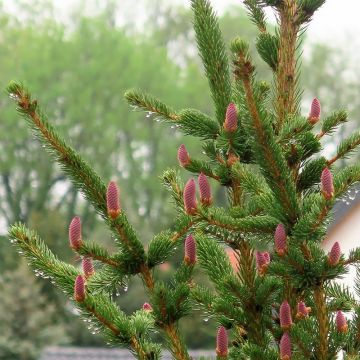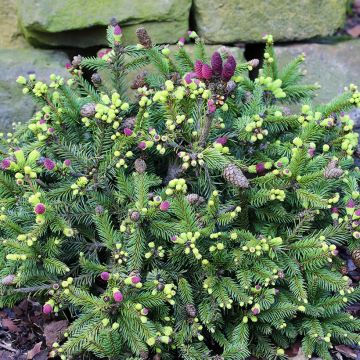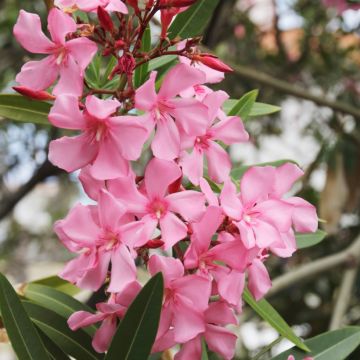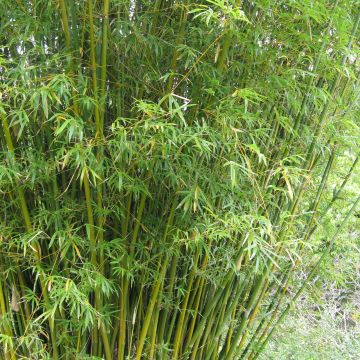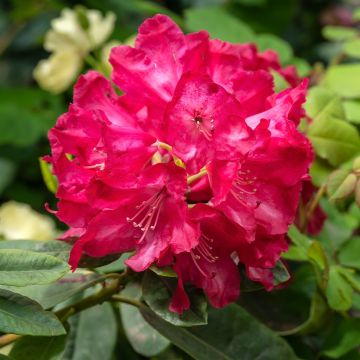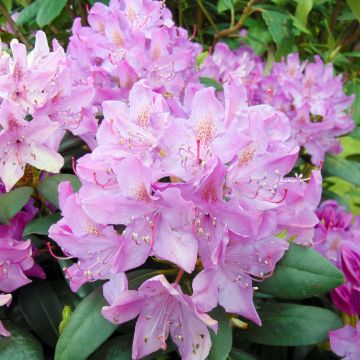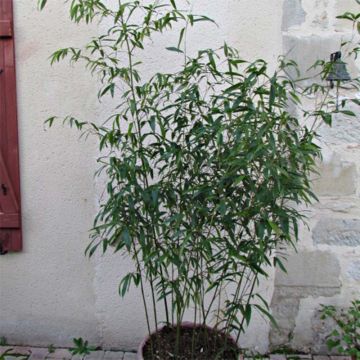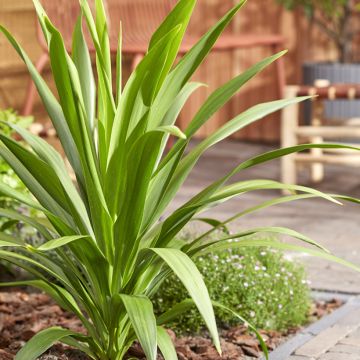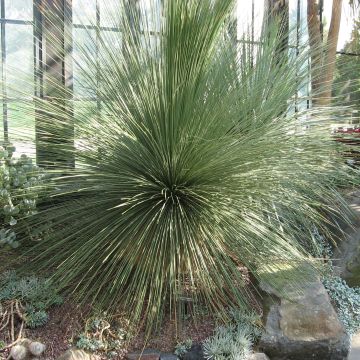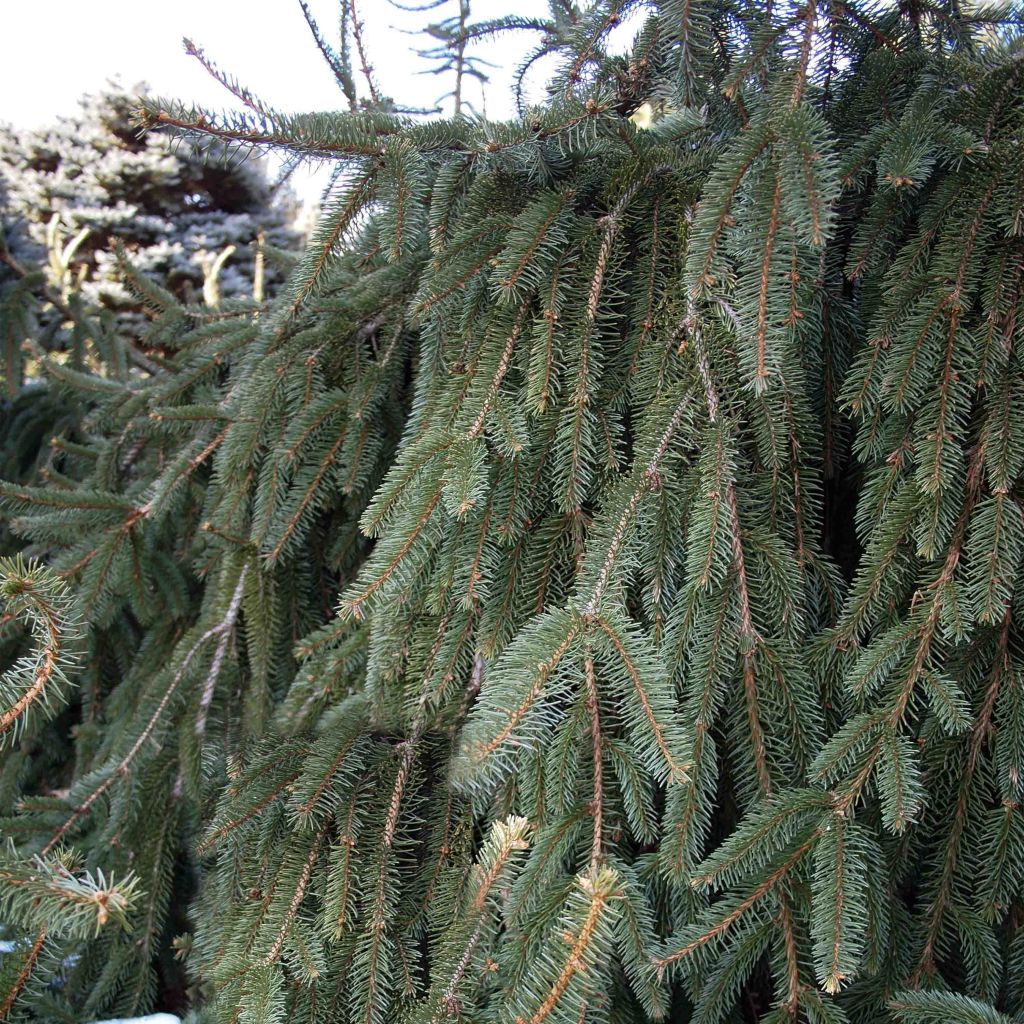

Picea abies Inversa - Norway Spruce
Picea abies Inversa - Norway Spruce
Picea abies Inversa
Norway Spruce, Common Spruce, European Spruce
This item cannot be shipped to the selected country
Delivery charge from €5.90
More information
Schedule delivery date,
and select date in basket
This plant carries a 24 months recovery warranty
More information
We guarantee the quality of our plants for a full growing cycle, and will replace at our expense any plant that fails to recover under normal climatic and planting conditions.
From €5.90 for pickup delivery and €6.90 for home delivery
Express home delivery from €8.90.

Does this plant fit my garden?
Set up your Plantfit profile →
Description
Picea abies 'Inversa' stands out for its characteristic and unique habit. Its axial branch is generally guided by a stake upwards to achieve a certain height. It eventually forms a narrow column covered with descending branches, with dense, vibrant green foliage, hanging like root hairs. Its base completely disappears under a never-ending trailing train that spreads on the ground. This surprising conifer grows slowly, reaching a height of 5 m to 8 m (16.4 ft to 26. 2 ft) and a spread of 2 m to 2.5 m (6.6 ft to 8.2 ft). Plant as a solitary specimen to adorn a large slope or in the centre of a flower bed. It appreciates dappled sunlight and thrives in cool, well-drained soil with little limestone.
Picea abies, also known as Norwegian Spruce or Red Spruce, is an evergreen conifer belonging to the Pinaceae family, native to northern Europe, specifically Scandinavia. In its natural environment, it has a typically conical and pyramidal habit and can reach a height of 30 m (98.4 ft). This species is traditionally used as a Christmas tree in Europe. It prefers well-drained and cool soils and is not afraid of very low temperatures.
The 'Inversa' variety derived from this species, is a unique form with a narrow, highly branched and weeping habit. If staked, it forms a rather erect small tree after a few years, with its axial branch beginning to bend strongly once it is no longer held in a vertical position. Its growth is quite slow. This conifer develops long, flexible and descending branches, closely pressed against the trunk. Over time, the lowest branches form a beautiful carpet. If left to its own devices and cultivated without a stake, the 'Inversa' spruce will show a creeping habit, allowing it to stand out in a large rock garden. Its foliage is a bright and vivid green. Its small leaves are stiff and prickly, arranged in clusters all around the branches, in 'brush' fashion. The female cones, pendant and oblong, measuring 10 cm to 15 cm (3.9 in to 5.9 in) in length, are purple, while the male cones, red in colour, turn yellow from pollen. The root system of spruces is shallow and spreading, which makes them difficult to transplant when mature and particularly sensitive to wind.
The weeping 'Inversa' spruce, with its exceptional ornamental qualities, deserves to be planted more often. Its picturesque appearance and strong personality make it suitable for being the centrepiece of a flower bed or lawn, as its silhouette stands out beautifully against a clear sky. It can also be planted near a water feature, as it performs well in moist soil. It lends itself well to the art of bonsai. The structural qualities of conifers naturally shine in a contemporary garden, which prefers the aesthetics of forms, silhouettes, and textures over the fleeting appearance of flowers. These plants have a reassuring permanence that provides lasting structure to a flower bed. They can be used to mark pathways and border terraces, easily replacing trimmed boxwood. They can be combined with wild grasses and heathers with very complementary temperaments. The key is to play with volumes and colours.
Report an error about the product description
Picea abies Inversa - Norway Spruce in pictures
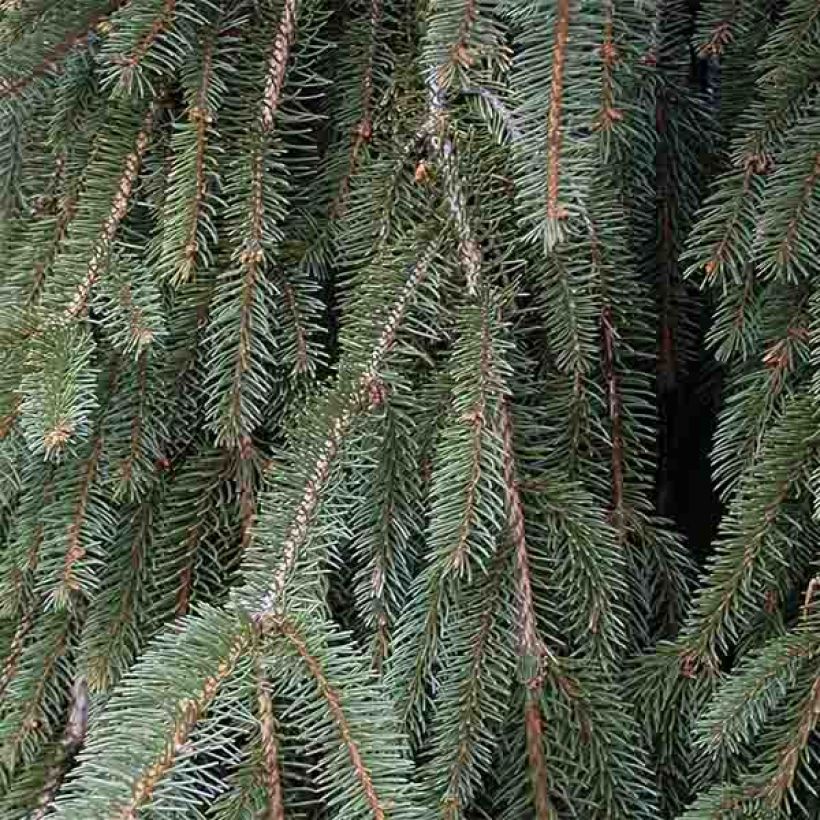

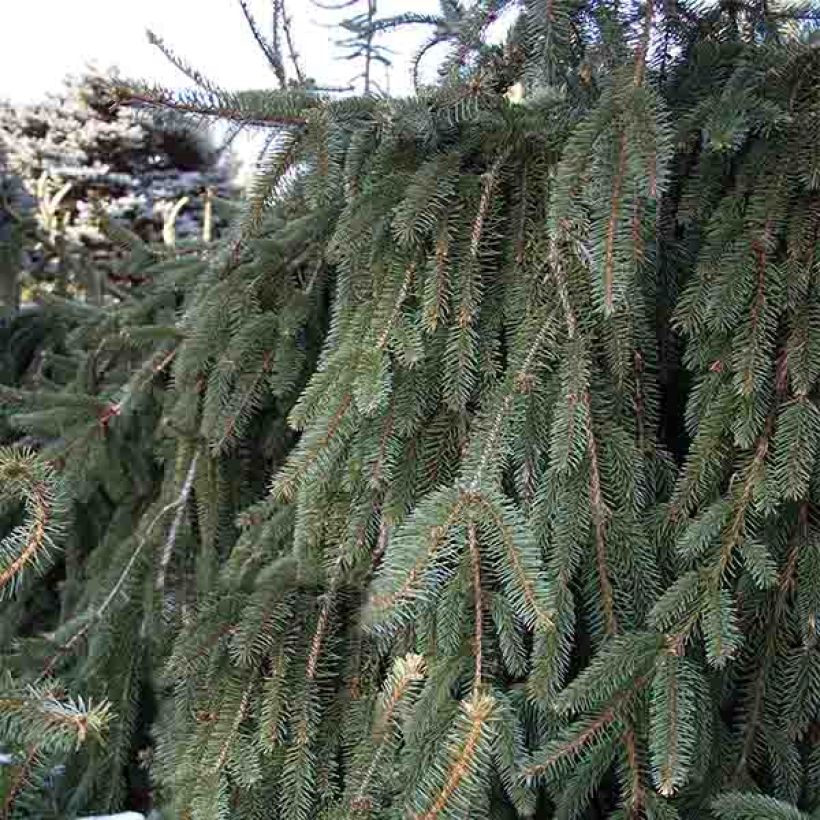

Plant habit
Flowering
Foliage
Botanical data
Picea
abies
Inversa
Pinaceae
Norway Spruce, Common Spruce, European Spruce
Cultivar or hybrid
Other Picea
Planting and care
Plant from September to November and from February to June in deep, moist but well-drained, light, neutral to acidic soil. In dry soil and in very sunny situations, it may be disappointing. Choose a gently sunny or partially shaded location, sheltered from prevailing winds. Soak the root balls well before planting. Add organic matter at planting and water generously in the first few years, and in case of prolonged drought. Apply a special conifer fertiliser every year in April and weed the soil in summer. This extremely hardy conifer, however, fears heavy, waterlogged soils in winter. Pruning is not necessary, but this variety tolerates it perfectly. This conifer reveals its full potential when allowed to grow freely. To obtain an upright habit, stake the bush up to the desired height.
Planting period
Intended location
Care
This item has not been reviewed yet - be the first to leave a review about it.
Evergreen shrubs
Haven't found what you were looking for?
Hardiness is the lowest winter temperature a plant can endure without suffering serious damage or even dying. However, hardiness is affected by location (a sheltered area, such as a patio), protection (winter cover) and soil type (hardiness is improved by well-drained soil).

Photo Sharing Terms & Conditions
In order to encourage gardeners to interact and share their experiences, Promesse de fleurs offers various media enabling content to be uploaded onto its Site - in particular via the ‘Photo sharing’ module.
The User agrees to refrain from:
- Posting any content that is illegal, prejudicial, insulting, racist, inciteful to hatred, revisionist, contrary to public decency, that infringes on privacy or on the privacy rights of third parties, in particular the publicity rights of persons and goods, intellectual property rights, or the right to privacy.
- Submitting content on behalf of a third party;
- Impersonate the identity of a third party and/or publish any personal information about a third party;
In general, the User undertakes to refrain from any unethical behaviour.
All Content (in particular text, comments, files, images, photos, videos, creative works, etc.), which may be subject to property or intellectual property rights, image or other private rights, shall remain the property of the User, subject to the limited rights granted by the terms of the licence granted by Promesse de fleurs as stated below. Users are at liberty to publish or not to publish such Content on the Site, notably via the ‘Photo Sharing’ facility, and accept that this Content shall be made public and freely accessible, notably on the Internet.
Users further acknowledge, undertake to have ,and guarantee that they hold all necessary rights and permissions to publish such material on the Site, in particular with regard to the legislation in force pertaining to any privacy, property, intellectual property, image, or contractual rights, or rights of any other nature. By publishing such Content on the Site, Users acknowledge accepting full liability as publishers of the Content within the meaning of the law, and grant Promesse de fleurs, free of charge, an inclusive, worldwide licence for the said Content for the entire duration of its publication, including all reproduction, representation, up/downloading, displaying, performing, transmission, and storage rights.
Users also grant permission for their name to be linked to the Content and accept that this link may not always be made available.
By engaging in posting material, Users consent to their Content becoming automatically accessible on the Internet, in particular on other sites and/or blogs and/or web pages of the Promesse de fleurs site, including in particular social pages and the Promesse de fleurs catalogue.
Users may secure the removal of entrusted content free of charge by issuing a simple request via our contact form.
The flowering period indicated on our website applies to countries and regions located in USDA zone 8 (France, the United Kingdom, Ireland, the Netherlands, etc.)
It will vary according to where you live:
- In zones 9 to 10 (Italy, Spain, Greece, etc.), flowering will occur about 2 to 4 weeks earlier.
- In zones 6 to 7 (Germany, Poland, Slovenia, and lower mountainous regions), flowering will be delayed by 2 to 3 weeks.
- In zone 5 (Central Europe, Scandinavia), blooming will be delayed by 3 to 5 weeks.
In temperate climates, pruning of spring-flowering shrubs (forsythia, spireas, etc.) should be done just after flowering.
Pruning of summer-flowering shrubs (Indian Lilac, Perovskia, etc.) can be done in winter or spring.
In cold regions as well as with frost-sensitive plants, avoid pruning too early when severe frosts may still occur.
The planting period indicated on our website applies to countries and regions located in USDA zone 8 (France, United Kingdom, Ireland, Netherlands).
It will vary according to where you live:
- In Mediterranean zones (Marseille, Madrid, Milan, etc.), autumn and winter are the best planting periods.
- In continental zones (Strasbourg, Munich, Vienna, etc.), delay planting by 2 to 3 weeks in spring and bring it forward by 2 to 4 weeks in autumn.
- In mountainous regions (the Alps, Pyrenees, Carpathians, etc.), it is best to plant in late spring (May-June) or late summer (August-September).
The harvesting period indicated on our website applies to countries and regions in USDA zone 8 (France, England, Ireland, the Netherlands).
In colder areas (Scandinavia, Poland, Austria...) fruit and vegetable harvests are likely to be delayed by 3-4 weeks.
In warmer areas (Italy, Spain, Greece, etc.), harvesting will probably take place earlier, depending on weather conditions.
The sowing periods indicated on our website apply to countries and regions within USDA Zone 8 (France, UK, Ireland, Netherlands).
In colder areas (Scandinavia, Poland, Austria...), delay any outdoor sowing by 3-4 weeks, or sow under glass.
In warmer climes (Italy, Spain, Greece, etc.), bring outdoor sowing forward by a few weeks.

































